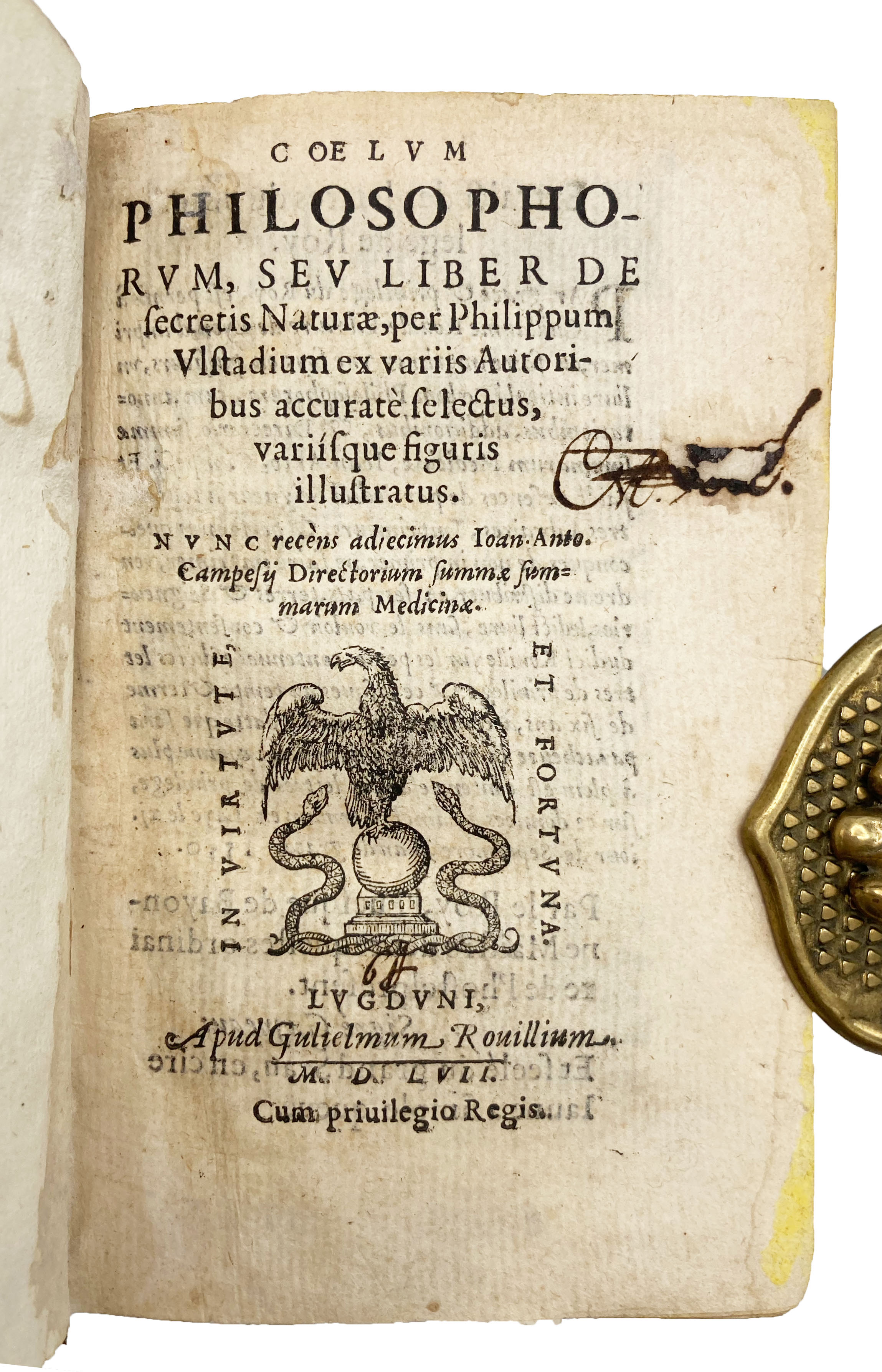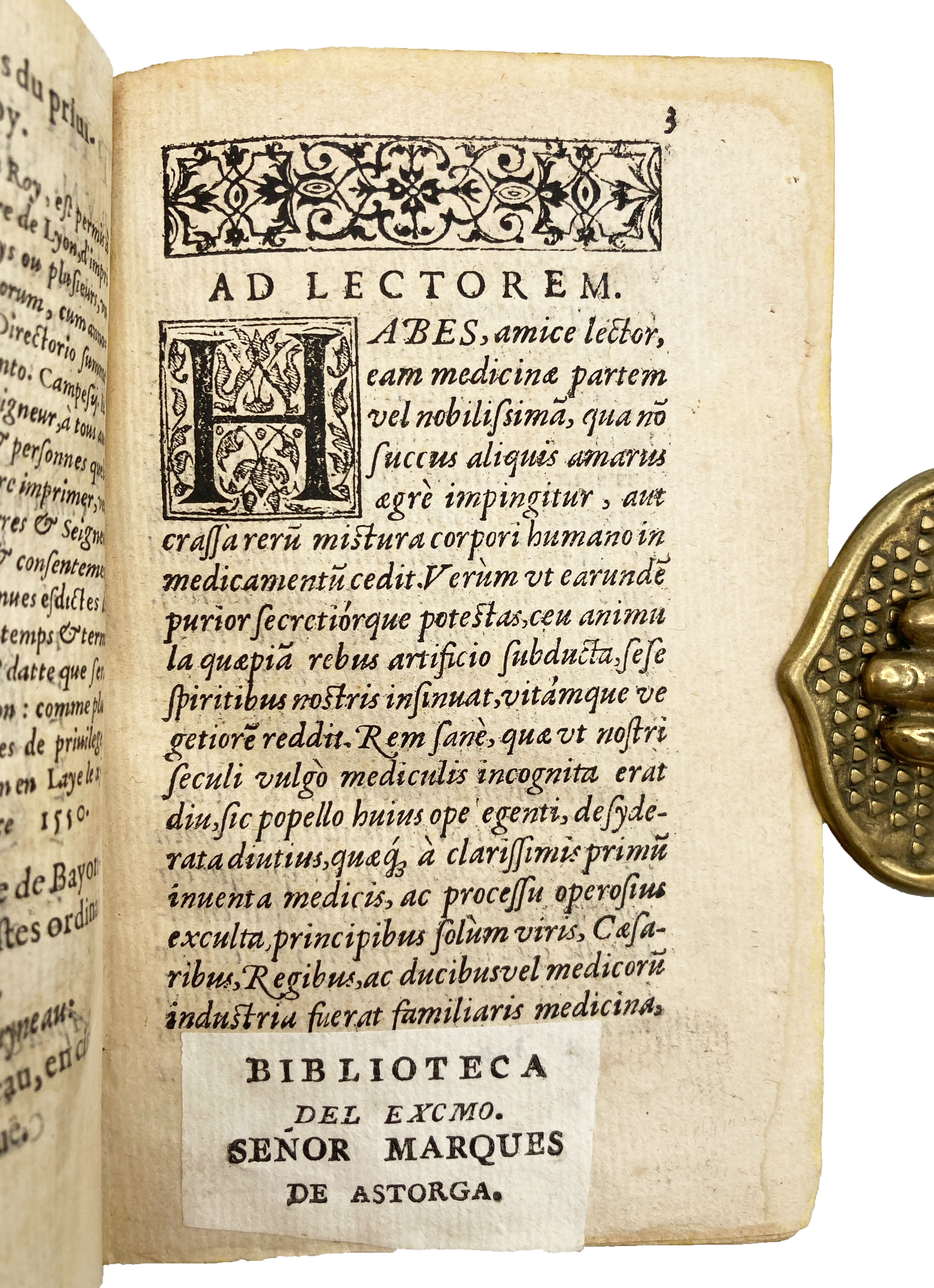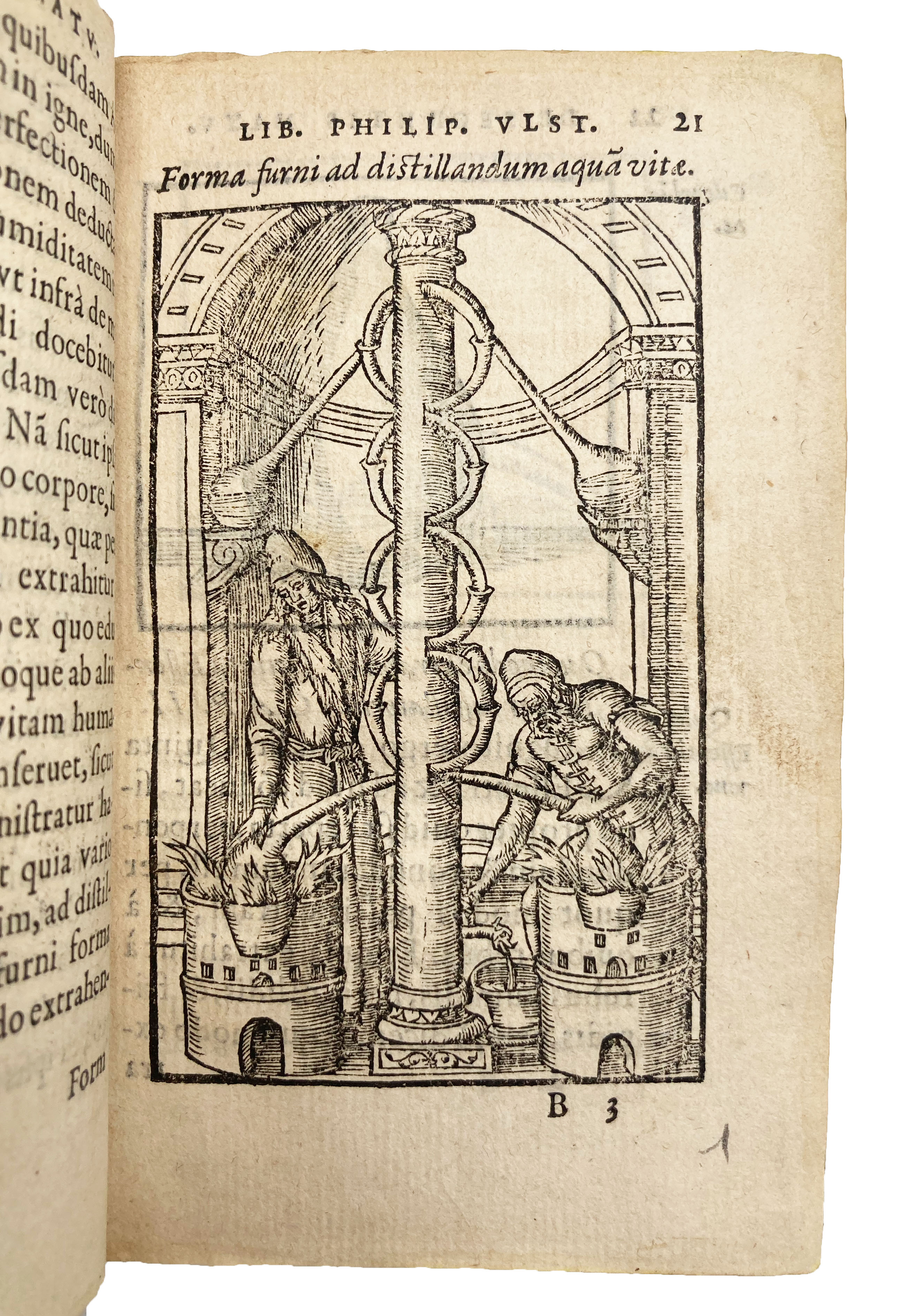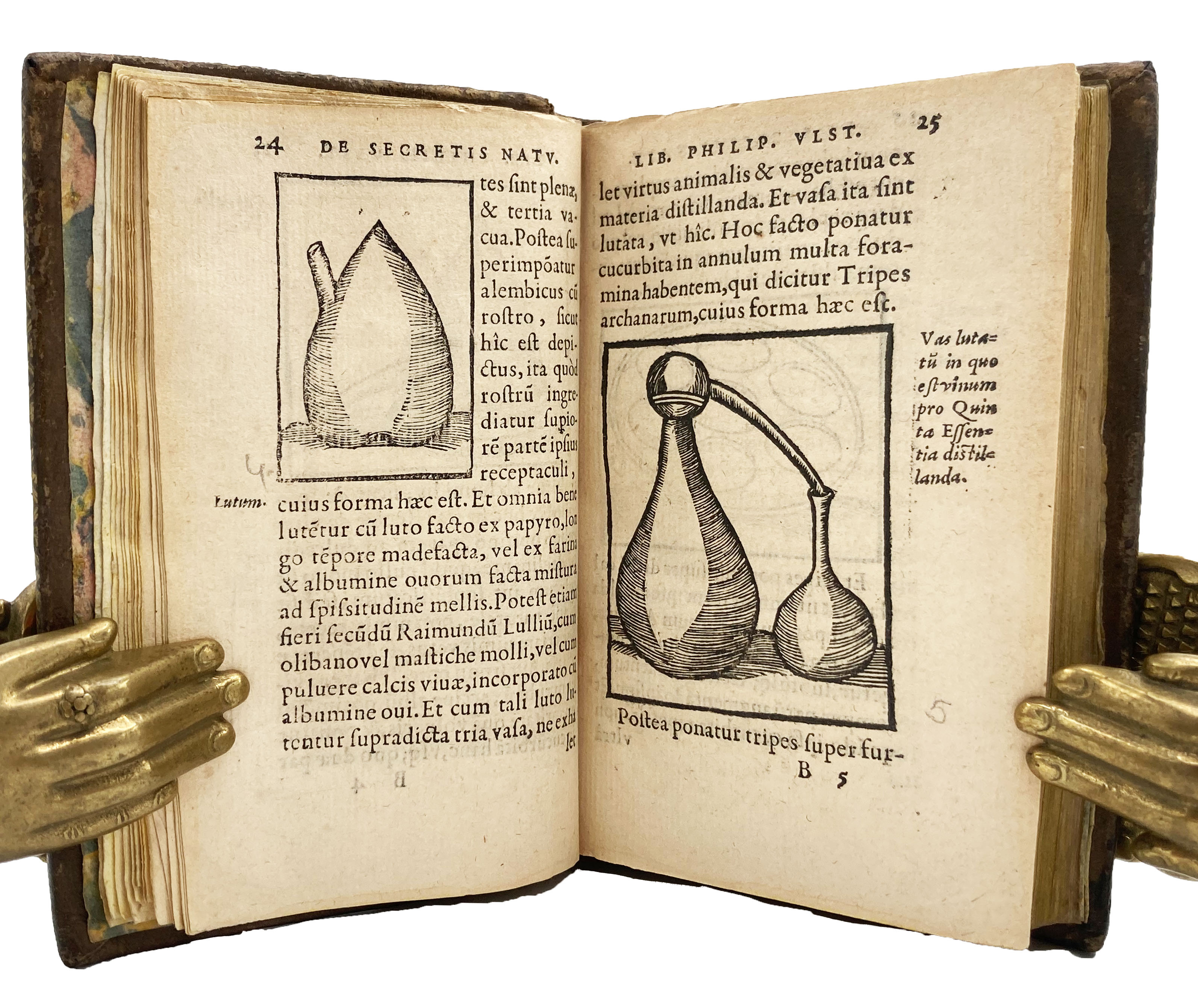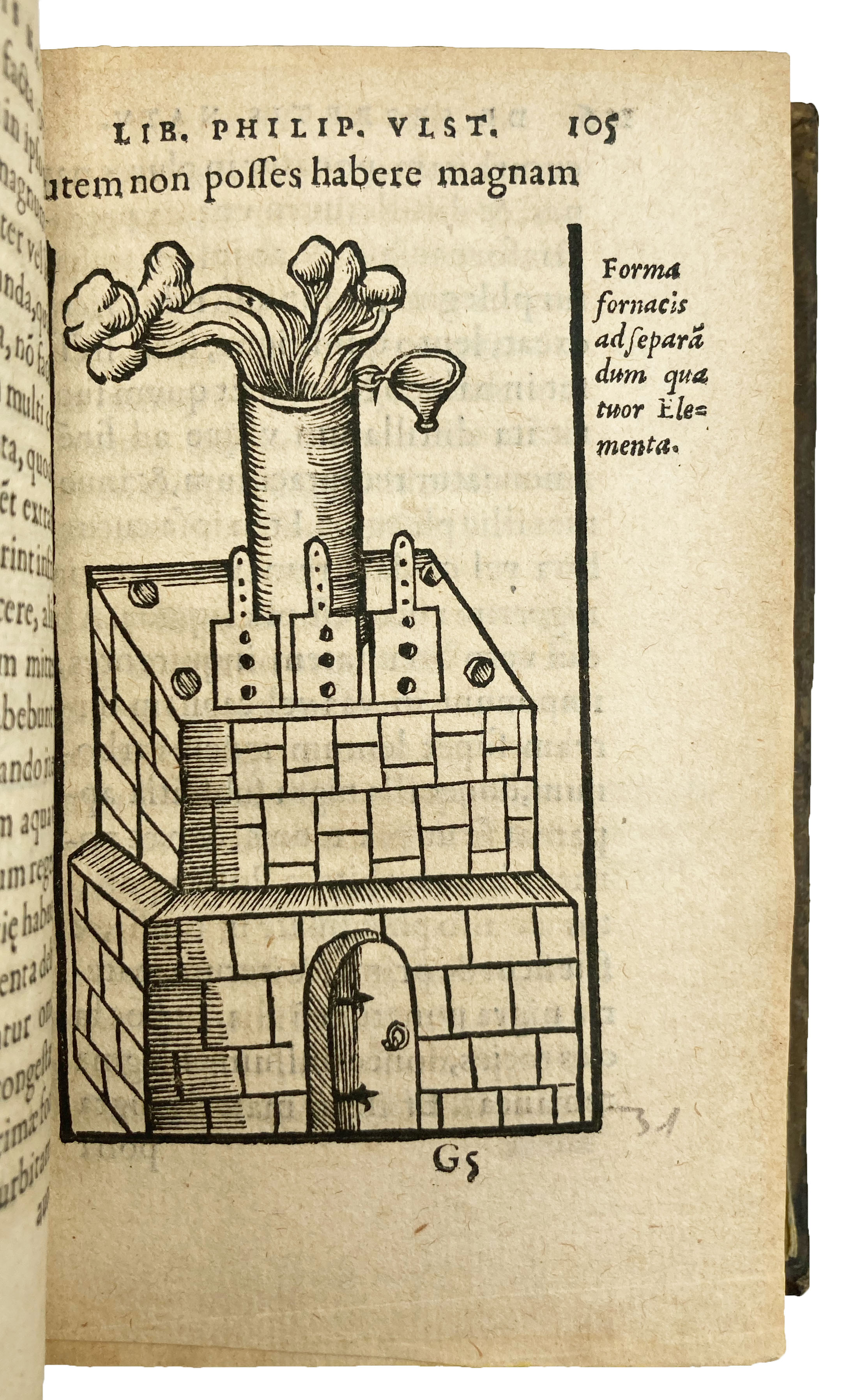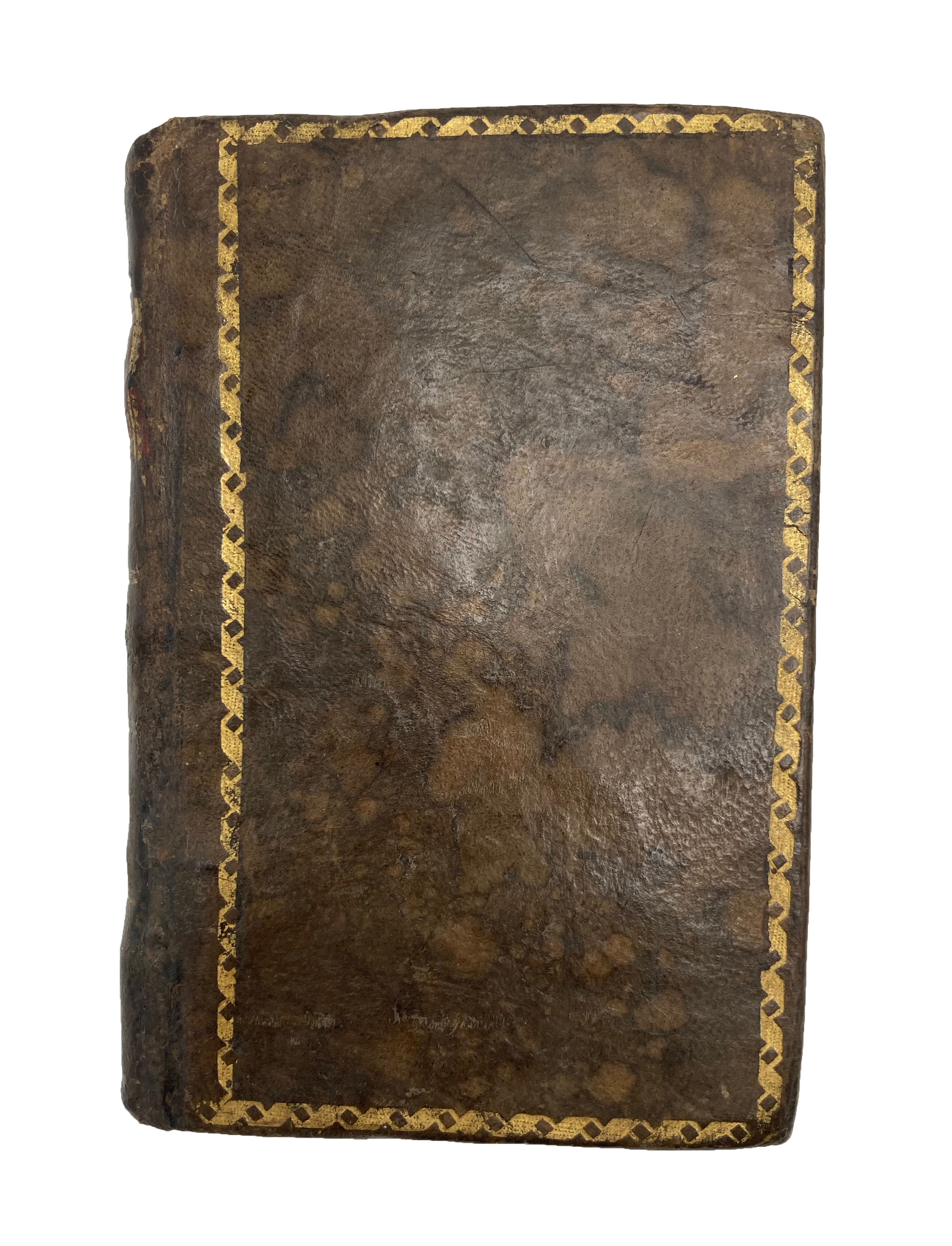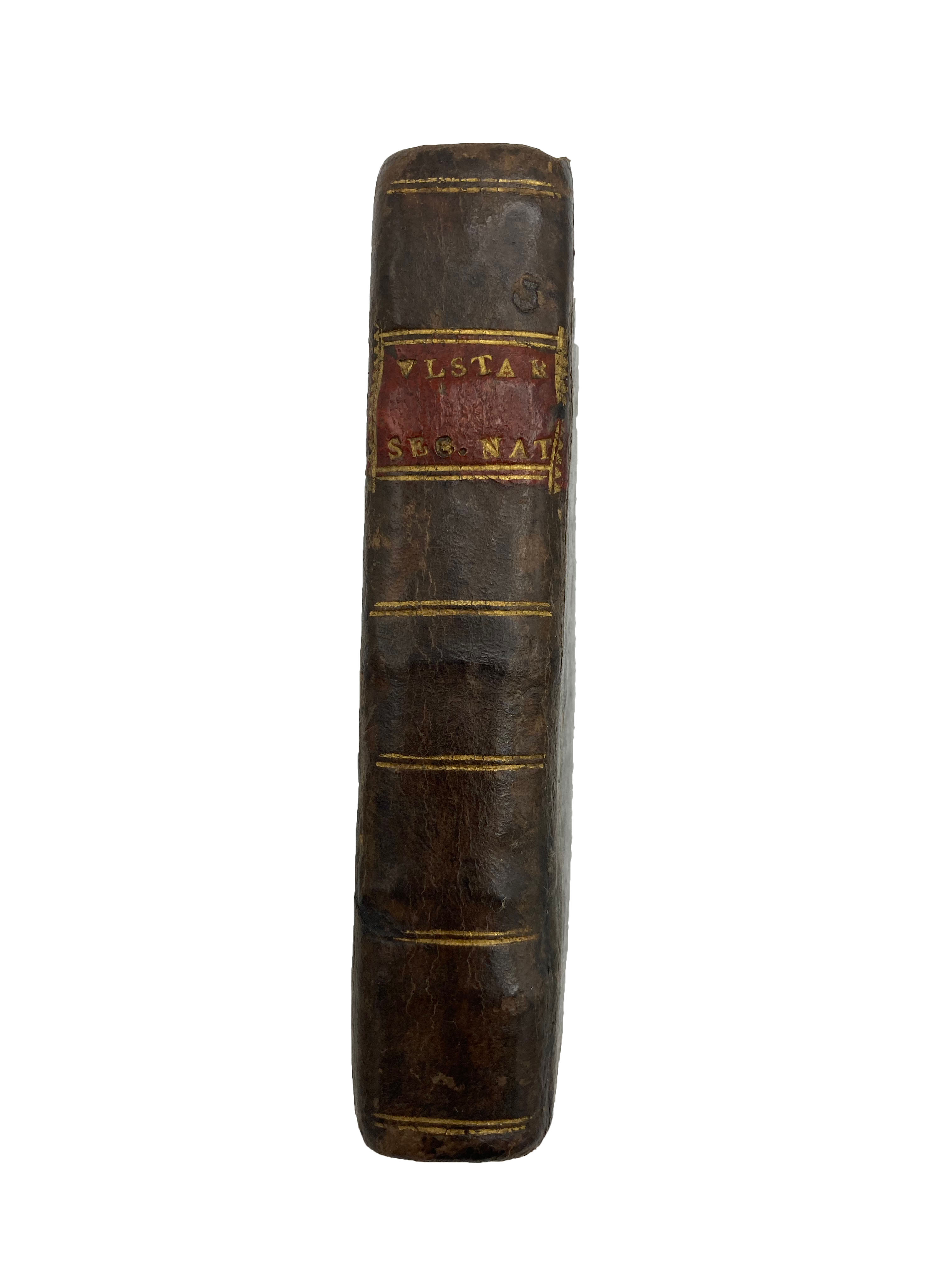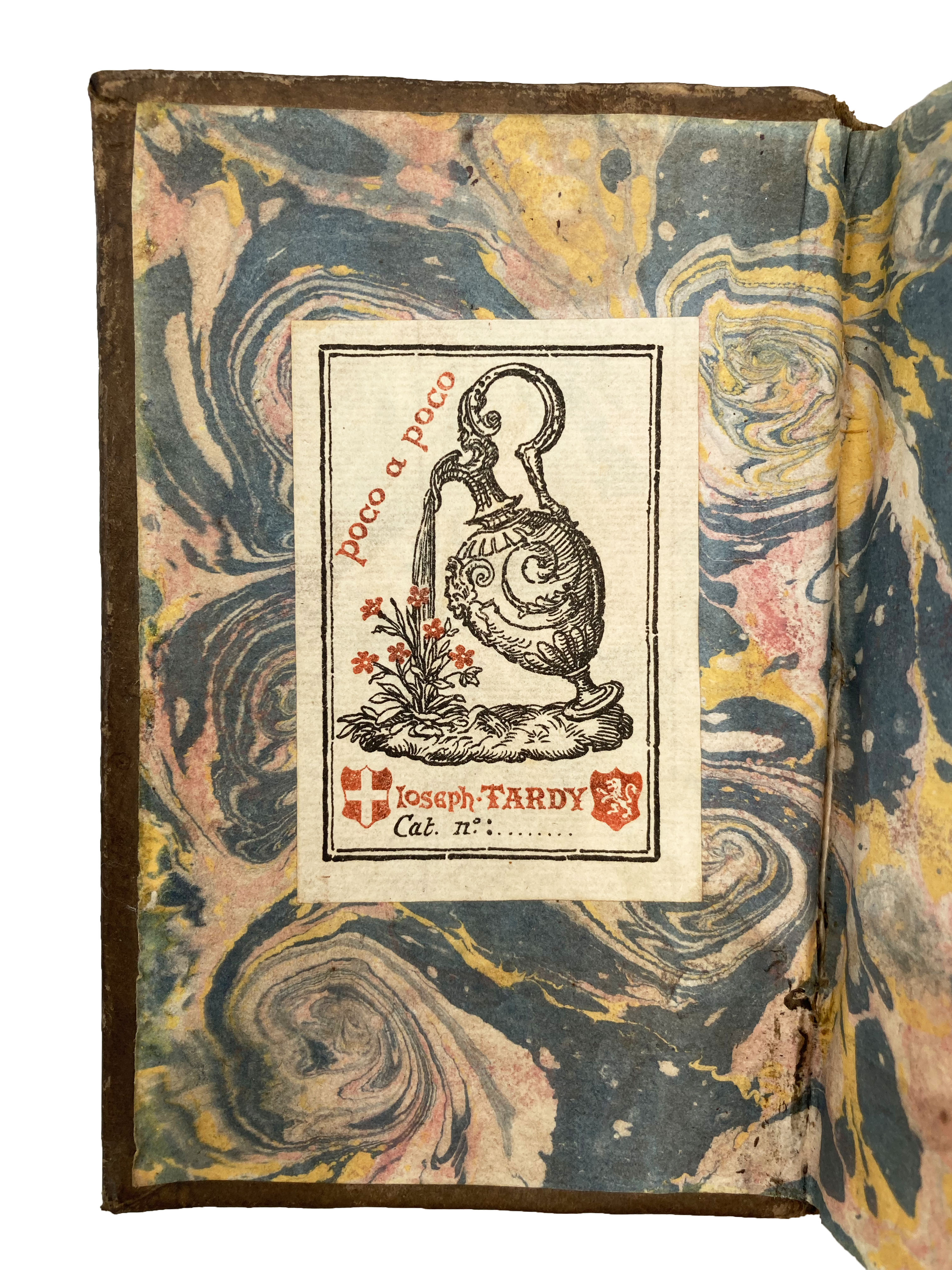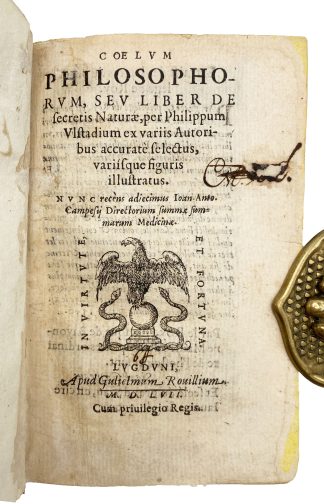ULSTAD, Philipp.
Coelum philosophorum, seu liber de secretis naturae.
Lyon, Guillaume Rouillé, 1557£2,950.00
16mo. pp. 431, [15]. Roman letter, some italic. Printer’s device on title-page, woodcut initials, printer’s ornaments, numerous in-text and full-page woodcuts of alchemical equipment. Spanish marbled calf, gilded dentelle borders to front and back cover, spine in six compartments, lettering to second, marbled pastedowns and end-papers. Old ms shelf-mark ‘Est. 30. A’ to fly, another ms inked over on title-page, with small marginal burn hole. Modern bookplate of Joseph Tardy, 18/19th-century printed label pasted to foot of sig. A2 “Biblioteca del excmo. Señor Marques de Astorga”.
Philipp Ulstad was a Nuremberg nobleman who taught medicine at the Academy in Fribourg in the early C16. He is primarily known to posterity for his Coelum philosophorum, an extremely popular and frequently reprinted work which served ‘as a standard authority on the preparation and use of distillates for nearly a century’ (DSB). Its popularity and influence is partly to be attributed to the clarity of Ulstad’s exposition of distillatory processes and to the numerous and informative woodcut illustrations. “Despite his use of alchemical terminology, Ulstad clearly dissociated himself from the enigmatic aspects of the alchemical tradition in offering his concise and rational account of the preparation of distilled remedies. […] The lucidity of his technical directions was a major reason for the influence exerted by Ulstad. His discussion of apparatus and manipulative procedures afforded the sixteenth-century investigator an accurate summary of the best distilling theory then available.” (DSB)
Throughout his book, Ulstad made great use of the four authors he names in the letter of dedication: Albertus Magnus, Ramon Lull, Arnald of Villanova, and John of Rupescissa. Ulstad wanted to present his readers – which would have included apothecaries, surgeons, and aspiring alchemists – with ideas and techniques which could serve a practical or scientific use. “The first nine chapters of the book are devoted to a discussion of the manipulative techniques used [for the preparation of the Quintessence]. These techniques are illustrated by means of woodcuts referred to in the text. Then follow twenty-eight separate recipes for the preparation of the Quintessence or aurum potabile from a wide variety of substances including gold, spices, fruits, flowers, precious stones, antimony, honey’ (Atkinson and Hughes, 105). Ulstad also outlines fourteen methods for the preparation of aqua vitae as a cure for several ailments.
Formerly part of the vast library established by Alonso Osorio, VII marqués de Astorga (c. 1533-1592); in the following centuries it came to incorporate the libraries of the Conde-Duque, Sessa, Velada, Montemar, and others. After Osorio’s death in 1816, his library was dispersed (see Catalogue de la bibliothèque […] de le Marquis d’Astorga, 1870).
USTC 152219. Dorbon 4993. Caillet 10914. Baudrier, IX, 237-238. Brunet 1008. Graesse VI Part II 225. Ferguson p. 482. Thorndike, Lynn, A history of magic and experimental science, vol. V (New York: Columbia University Press, 1941), 541-2, 602, 621. Edward R. Atkinson and Arthur H. Hughes, “The Coelum philosophorum of Philipp Ulstad”, Journal of Chemical Education (1939) 16.3. Fichman, Martin, \\\\\\\"Ulstad, Philipp\\\\\\\", in Complete Dictionary of Scientific Biography, vol. XIII (Charles Scribner\\\\\\\'s Sons, 2008), pp. 534-535. Telle, Joachim, \\\\\\\"Ulstadius, Philipp\\\\\\\" in Neue Deutsche Biographie.

